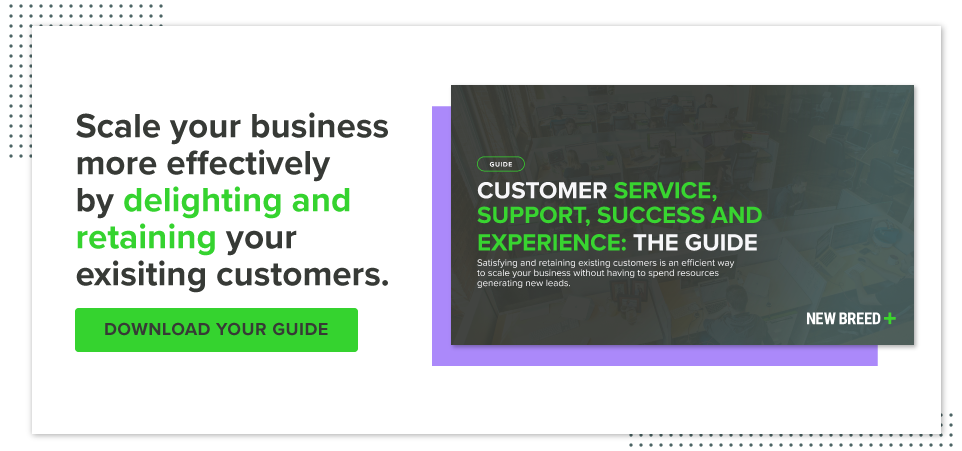
Healthy revenue depends on retention and expansion. In order to see long-term success and growth, businesses need to be customer-centric: a state of being that allows for them to consistently provide value to their customers. That value comes not only through product, but also through experiences.
To understand a customer’s experience, start with a map.
Customer experience maps are a tool that can help you understand the experience you create — so you can ensure it’s positive — and then continuously improve upon that experience.
What is a Customer Experience Map?
A customer experience map is the set of touchpoints that customers and people on their way to becoming customers have with your brand.
“It is different from the customer’s journey in that each interaction has a set of attributes to it, so we have some way of understanding that interaction in a layer beyond checking the box that it occurred,” says Client Experience Lead Karin Krisher.
Simple customer experience maps can just be touchpoints with sentiment attached. For example, you can use emojis to represent if a customer was happy, neutral or unhappy at a specific touchpoint. Or, you could create your map as a timeline with peaks and valleys representing how customers are feeling as they progress through their engagement with your company.
“It really should be about the impression of the interaction rather than the interaction itself, and that is how you would move someone through the ideal experience: by making sure the highs and lows are at the right time,” Karin says.
Because the customer experience starts pre-sale, customer experience maps should include touchpoints that occur before a customer closes. However, it should not stop at the sale, but rather continue to record touchpoints like onboarding, check-ins and renewals.
Customer experience maps can be used to document and track what individual customers or customer segments are going through and thus be used reactively, or you can create a map of the ideal customer experience and try to replicate it with each customer.
“You can use it in a more binary way and say ‘these are all the times when we want to interact with the client’ and try to create those interactions based on knowing the ideal experience goes through all these steps,” Karin says.
Measuring experience for customers and companies
At B2B businesses, customers refer to two distinct groups: the company or account as a whole and the individuals who work there. This can impact how you create your maps because you need to take sentiment from both perspectives into account.
“You should treat experiences specifically as individual, but there are certain aspects of mapping it that you would be required to do at the account level,” Karin says.
For example, 30-day check-ins would be based on the account reaching that milestone, even if the contacts you reach out to have only been in your database for 15 days.
“It also depends on how the account interacts. If you have an account where you communicate with five people during each interaction, and that’s representative of the company itself and the company’s experience, then you can just match one-to-one — you don’t need a separate map. It follows that if the individuals are having a good experience, the account is having a good experience,” Karin says.
When that’s not the case (for instance, if you’re working with multiple points of contact on different aspects of the product or service delivery), then the account experience is only as good as the worst individual experience — and that should impact how you operationalize your customer experience map.
For example, you wouldn’t want to request a review from someone if another contact from their company is having a terrible experience, even if the person you reach out to is happy.
The Benefits of Customer Experience Maps
The benefits of customer experience maps depend upon the purpose for which they were created. If you created a map of the ideal experience and are working to apply it to engagements, then the main benefit is that you’re improving customer sentiment and increasing retention and expansion.
Customer experience maps that track what individual customers are experiencing help you understand what your customers are going through so you know what makes the most positive experience. You can use these maps to identify where points of friction arise in order to react effectively, and they help you identify where you’re succeeding.
“Another thing [customer experience maps] can do is help everyone position the customer in their mind. You should have some sense of what they’ve been through and what they’ll go through at any given delivery point and some sense of what makes it good for them and what makes it bad,” Karin says.
Sharing your customer experience maps throughout your company can help you operate in a customer-centric way because it increases employees’ awareness of the impact of every touchpoint a customer goes through — even the ones the employees aren’t personally involved in.
Quinn Kanner
Quinn is a writer and copyeditor whose work ranges from journalism to travel writing to inbound marketing content.





